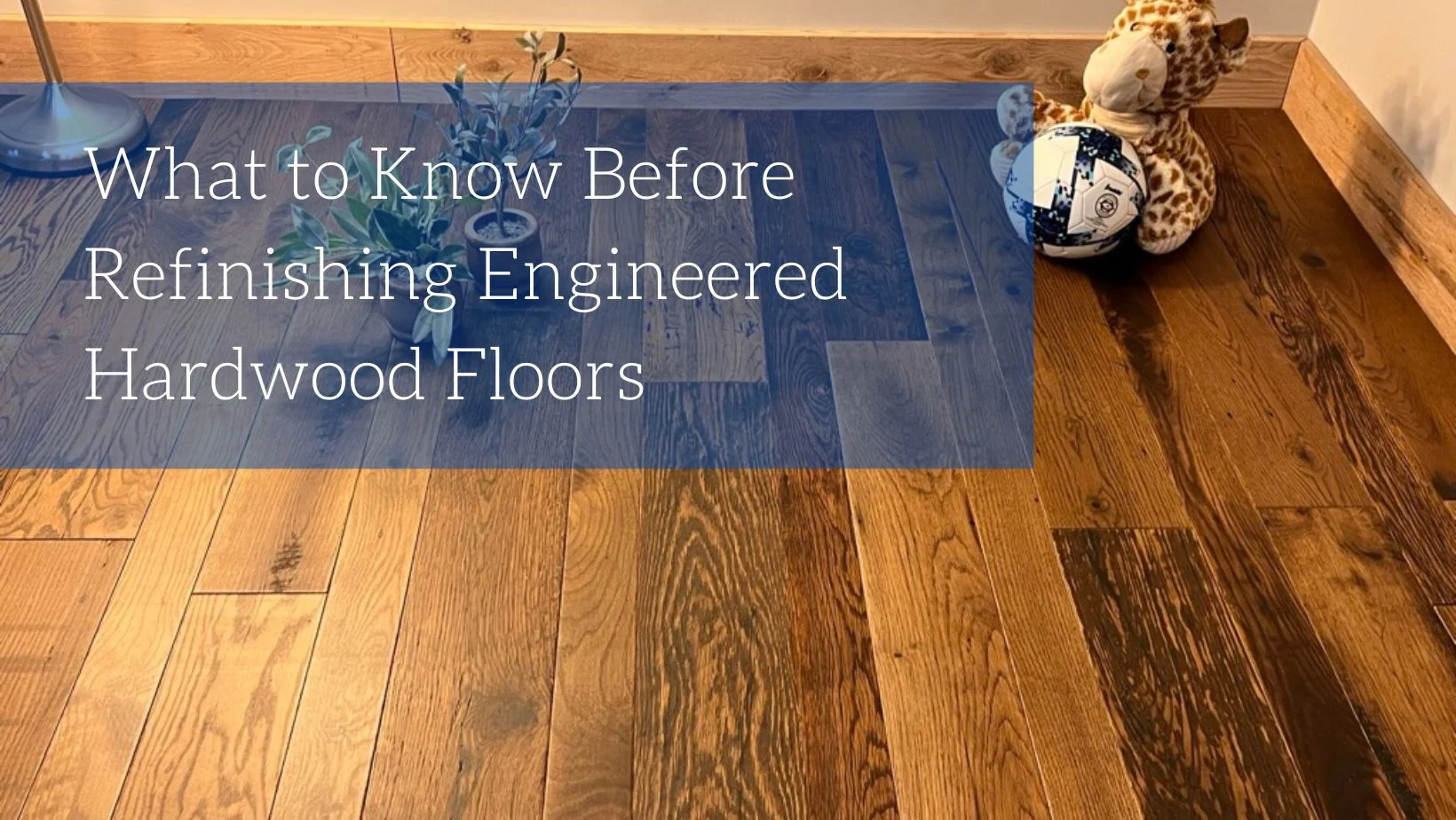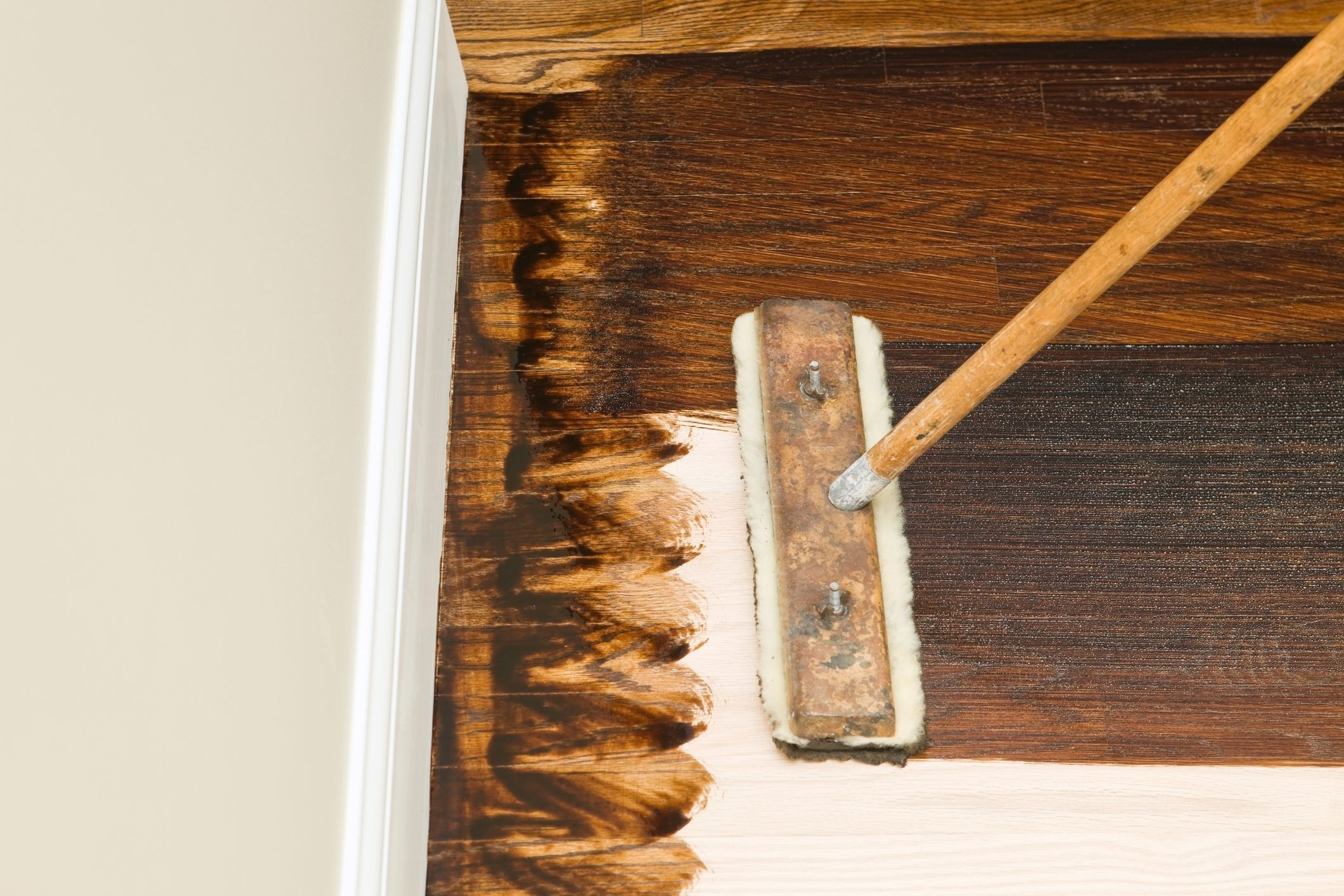Have you ever looked at your engineered wood floors and wondered if they could regain their original luster? Perhaps they’ve lost their shine from years of daily use, or maybe you just want a fresh look.
You’re not alone. Many homeowners like you are curious about the possibilities of refinishing engineered wood floors. Can it be done? And if so, how? These questions often linger in the minds of those wanting to breathe new life into their floors without the hassle of a complete replacement.
Imagine walking into your home and being greeted by floors that look brand new, restoring the beauty and warmth you once adored. It’s entirely possible, and this article will guide you through everything you need to know. You’ll discover the secrets of refinishing engineered wood floors, how it can transform your space, and whether it’s the right choice for you. Let’s dive into how you can revitalize your floors and enhance your home’s aesthetic, ensuring you make the best decision for both your style and budget.

Engineered Wood Floors Basics
Engineered wood floors are made up of layers. The top layer is real wood. The layers below are plywood or fiberboard. This makes the floor stable and strong. The top wood layer is called a veneer. It can be made from different types of wood. Oak, maple, and cherry are popular choices. These floors look like solid wood but are often cheaper. They also handle moisture better than solid wood.
Engineered wood floors have different finishes. A finish is what protects the wood. Some floors have a glossy finish. Others have a matte finish. Glossy floors shine and look smooth. Matte floors are not shiny. They look more natural. Some finishes help protect against scratches. Others help resist stains and water. The finish can change how the floor looks and feels. Choose a finish based on your needs and style.
Refinishing Potential
Wear layer thickness is key for refinishing engineered wood floors. The wear layer is the top part you walk on. It must be thick enough to be sanded down. A thicker wear layer allows more refinishes. Floors with a thin layer might not be refinished even once. Measure your wear layer to know its thickness. Most floors have a wear layer between 2mm and 6mm. The thicker, the better for refinishing.
Engineered wood floors come with different finishes. Each finish has its own look and feel. Some common types are oil-based and water-based finishes. Oil-based finishes are shiny. They are durable and need less care. Water-based finishes dry fast and show the wood’s natural color. Both types protect the floor. Choose the finish that suits your style and needs.
Assessing Floor Condition
Engineered wood floors can show signs of wear over time. Scratches are common if there is much foot traffic. Dullness is a sign of wear. The shine might fade with age. Look for gaps between boards. This can show that the floor is worn out. Sometimes, the color changes. Sunlight can cause fading.
Moisture can harm wood floors. Check for water stains on the surface. The wood may swell if wet. Warping can happen with too much water. Watch for soft spots underfoot. Soft spots might mean water damage. Mold can grow on wet wood. Mold is a sign of damage. Damaged floors need fixing before refinishing. Always keep floors dry and clean.

Refinishing Process Steps
Start by moving all furniture out of the room. Sweep or vacuum the floor. It needs to be clean. Use a damp cloth to wipe away dust and dirt. Ensure the floor is dry before proceeding. This step is crucial for a smooth finish.
Use a light sandpaper for engineered wood. Sand gently to avoid damage. Check the thickness of the wood layer. It must be thick enough for sanding. Ensure even sanding across the entire floor. This helps in achieving a uniform look.
Choose a finish that matches your preference. Apply the finish with a brush or roller. Cover the floor evenly. Let it dry completely. Apply a second coat if needed. This will enhance the floor’s shine and durability.
Tools And Materials Needed
To refinish engineered wood floors, some tools are essential. A floor sander helps to remove the old finish. You will also need sanding discs for the sander. Sanding blocks are useful for corners. A vacuum cleaner is necessary to clean up dust. A tack cloth can remove fine dust particles.
For applying the new finish, a paintbrush or paint roller works best. A stir stick is needed to mix the finish. Use a mask to protect from dust and fumes. Safety glasses protect your eyes. Gloves keep your hands clean and safe.
Choosing the right finish is important. Polyurethane is a popular choice. It is durable and easy to apply. Water-based finishes dry faster and have less odor. Oil-based finishes are also available. They give a rich color but take longer to dry.
Consider the look you want. A matte finish gives a natural look. A glossy finish is shiny and bright. Choose what fits your style best. Always follow the instructions on the finish product.

Professional Vs Diy Refinishing
Hiring a professional can be costly. Expect to pay more for their expertise. They have the right tools and experience. This can make the floor look like new. DIY refinishing can save money. But it requires time and patience. Mistakes can be costly to fix. Buying supplies and renting tools adds up. Consider these cost factors before deciding.
Refinishing needs some skills. Professionals have training and experience. They know how to handle different wood types. DIY refinishing needs learning and practice. Watching videos helps, but hands-on practice is key. Mistakes can damage the floor. Choose based on your comfort and skills.
Maintenance Tips Post-refinishing
Always sweep or vacuum the floor gently. Use a soft broom or a vacuum with a wood floor setting. This helps in removing dust and debris. For deeper cleaning, use a damp mop. Ensure the mop is not too wet. Too much water can damage the wood. Choose a cleaner made for wood. Avoid harsh chemicals. They can harm the floor finish. Dry the floor immediately after mopping. This prevents water spots.
Place mats at doorways. They catch dirt from shoes. Use rugs in high-traffic areas. This protects the floor from wear. Ensure rugs are non-slip. Furniture pads are important. They prevent scratches from heavy furniture. Move furniture carefully to avoid damage. Keep pet nails trimmed. This helps in reducing scratches. Ensure the room stays dry. Use a dehumidifier if needed.
Benefits Of Refinishing
Refinishing is a smart choice for floors. It’s much cheaper than buying new. You save money and keep your home looking good. Refinishing removes scratches and dents. This makes your floor look new again. With less money spent, you get a great result. Your floors last longer too. This is a good deal for any homeowner.
Refinishing makes floors look beautiful. Old floors get a fresh look. Colors become bright and lively. The shine adds charm to any room. This improves the overall feel of your home. A good-looking floor makes everyone happy. Friends and family will notice the change. It’s a simple way to boost your home’s style.
Frequently Asked Questions
Can Engineered Wood Floors Be Sanded?
Yes, engineered wood floors can be sanded, but only carefully. Most engineered floors have a thin veneer layer. Sanding should be done minimally to avoid damaging the layer. Professional assessment is recommended before undertaking any sanding process.
How Often Can Engineered Wood Be Refinished?
Engineered wood floors can typically be refinished once or twice. The veneer layer is thinner than solid wood. Excessive refinishing can damage the surface. Consulting a flooring expert is advisable to determine the best refinishing approach.
What Is The Refinishing Process For Engineered Wood?
Refinishing engineered wood involves cleaning, sanding, and applying a new finish. First, the floor is thoroughly cleaned. Then, light sanding is performed to prepare the surface. Finally, a new coat of finish is applied to restore the floor’s appearance.
Does Refinishing Affect Engineered Wood Durability?
Refinishing can enhance the durability of engineered wood floors. It revitalizes the surface and adds protective layers. Proper refinishing can extend the lifespan of the floor. However, improper refinishing can damage the veneer, reducing durability.
Conclusion
Refinishing engineered wood floors can refresh your home’s look. It’s possible but requires care. Always check the floor’s veneer thickness first. Thicker veneers can handle refinishing better. Consult professionals for best results. They ensure no damage during the process. Regular maintenance helps extend the floor’s life.
Keep them clean and dry. Avoid harsh chemicals. This preserves their beauty. Engineered wood floors are a stylish choice. They offer a natural feel. With proper care, they stay beautiful for years. Consider refinishing if needed. It’s an effective way to maintain their appearance.




